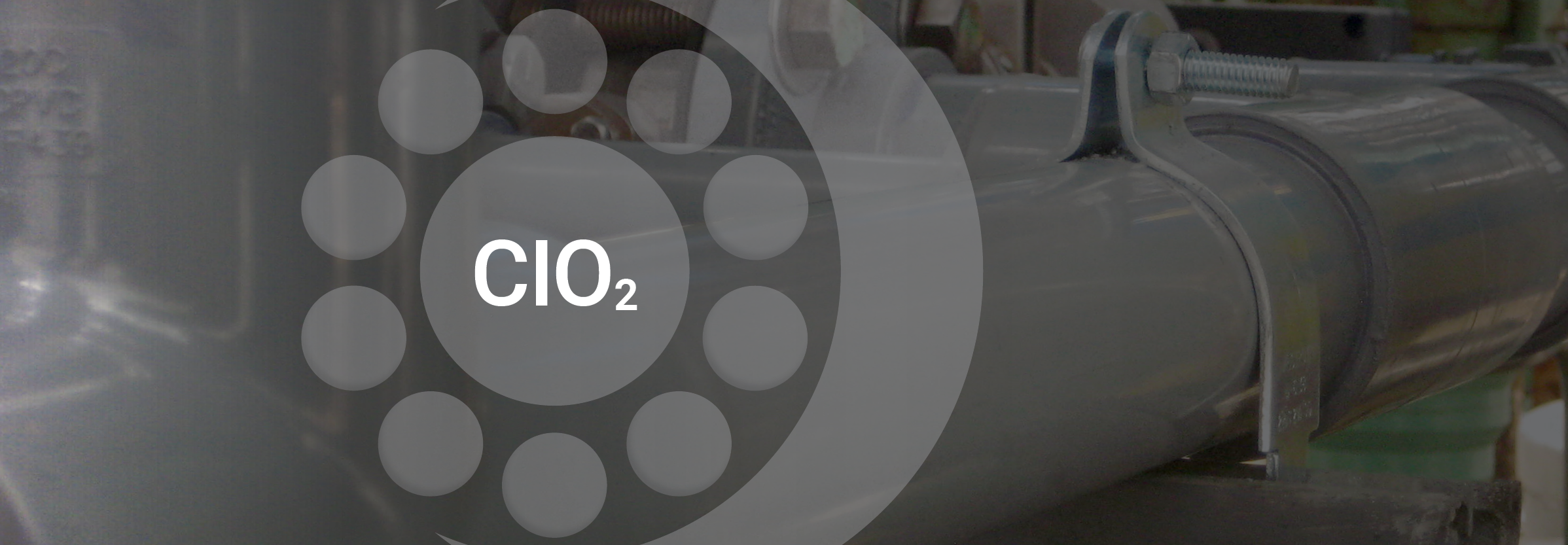The Rise of Chlorine Dioxide for Water Disinfection
The transition from chlorine to chlorine dioxide for water treatment and other industrial uses has been gradual and has increased since the 1990s because it doesn’t produce the harmful byproducts that chlorine does when it reacts with organic waste in water.
This increased safety comes at the price of possible corrosion: As a strong oxidizing agent, chlorine dioxide readily accepts electrons from other substances, which can weaken certain types of piping material. A piping material must be trusted to reliably perform against these corrosive conditions.
How Chlorine Dioxide is Used
Chlorine dioxide is an important part of disinfection in many industrial and commercial processes.
The multi-stage process of wastewater treatment typically involves five physical, chemical and biological treatment steps to remove contaminants from water:
- Large debris and solids are removed through a screening process.
- Primary treatment removes smaller solids and organic matter through sedimentation/flotation.
- Secondary treatment uses microorganisms to break down and remove organic matter and nutrients.
- Tertiary treatment removes remaining contaminants such as nitrogen and phosphorus.
- The disinfection stage introduces disinfectants like chlorine dioxide to kill any remaining pathogens.
Chlorine dioxide is also an essential chemical in on-site secondary disinfection to mitigate Legionella in healthcare facilities and in cooling towers. In a healthcare setting, aqueous chlorine dioxide is used for:
- Surface disinfection, including floors, walls, countertops and equipment surfaces.
- Medical equipment and instrument disinfection, including endoscopes, surgical instruments, respiratory devices and other reusable items.
- Environmental decontamination, such as fogging or spraying aqueous chlorine dioxide to disinfect the air and surfaces in a room, hallway or larger area.
In cooling towers, chlorine dioxide is either introduced to the tower’s water or generated onsite for use, though levels must be frequently tested.
Why Chlorine Dioxide Rose to Prominence
Chlorine dioxide overtook chlorine for disinfection for several reasons.
Effectiveness: Chlorine dioxide has proven to be a more effective disinfectant than chlorine against a wider range of microorganisms, including bacteria, viruses, and protozoa. It is also more effective at lower concentrations and can remain active in water for longer periods.
Taste and Odor: Chlorine can make water unpleasant to drink or use. By contrast, chlorine dioxide has no taste or odor.
Safety: Chlorine dioxide is safer than chlorine or liquid bleach. It does not produce harmful byproducts (such as trihalomethanes, or THMs) that can form when chlorine reacts with organic matter in water. It is also safer because it can be generated onsite, rather than transported. The generator produces chlorine dioxide gas through a chemical reaction between sodium chlorite and an acid, which is then dissolved in water to create an aqueous solution.
Environmental Impact and Regulatory Compliance: Chlorine dioxide is less environmentally harmful than chlorine because it breaks down into harmless byproducts. It is an approved disinfectant by many regulatory bodies like the World Health Organization (WHO) and the Environmental Protection Agency (EPA).
But all these benefits have a significant drawback: Chlorine dioxide can cause corrosion in piping systems, as it is a strong oxidizing agent that readily accepts electrons from other substances, which can weaken certain types of piping material. Aqueous chlorine dioxide has a high oxidation potential, and the byproducts of creating chlorine dioxide – salt and acid – assist in the corrosion process.
Just as salt oxidizes metal and corrodes it, chlorine dioxide does so as well, weakening metal piping systems and allowing rust contamination. And some plastics, like those of the polyolefin family (polyethylene, polypropylene and polybutylene) experience rapid material degradation if exposed to chlorine dioxide. One solution is lined steel piping or polyvinylidene fluoride (PVDF), which still have usage limitations and are prohibitively expensive.
Chlorinated polyvinyl chloride (CPVC) provides an alternative with a longer service life than metal at a better cost than PVDF. With chlorine protecting its molecular chain, CPVC better resists the degrading effects of corrosive chemicals like chlorine dioxide when used as specified.
Reliable Chlorine Dioxide Performance with Corzan® CPVC
Chlorine dioxide has largely overtaken chlorine for industrial disinfection. Specifying engineers need a material proven to reliably handle this harsh chemical. Corzan® CPVC is specifically formulated to handle harsh chemicals, particularly those with high chlorine content, without degradation. Its proprietary additives, superior testing and production and expert support make Corzan CPVC the ideal choice for chlorine dioxide. In fact, chlorine dioxide is one of the top ten chemicals that Corzan CPVC is more suitable for when compared to metal and other plastics.

